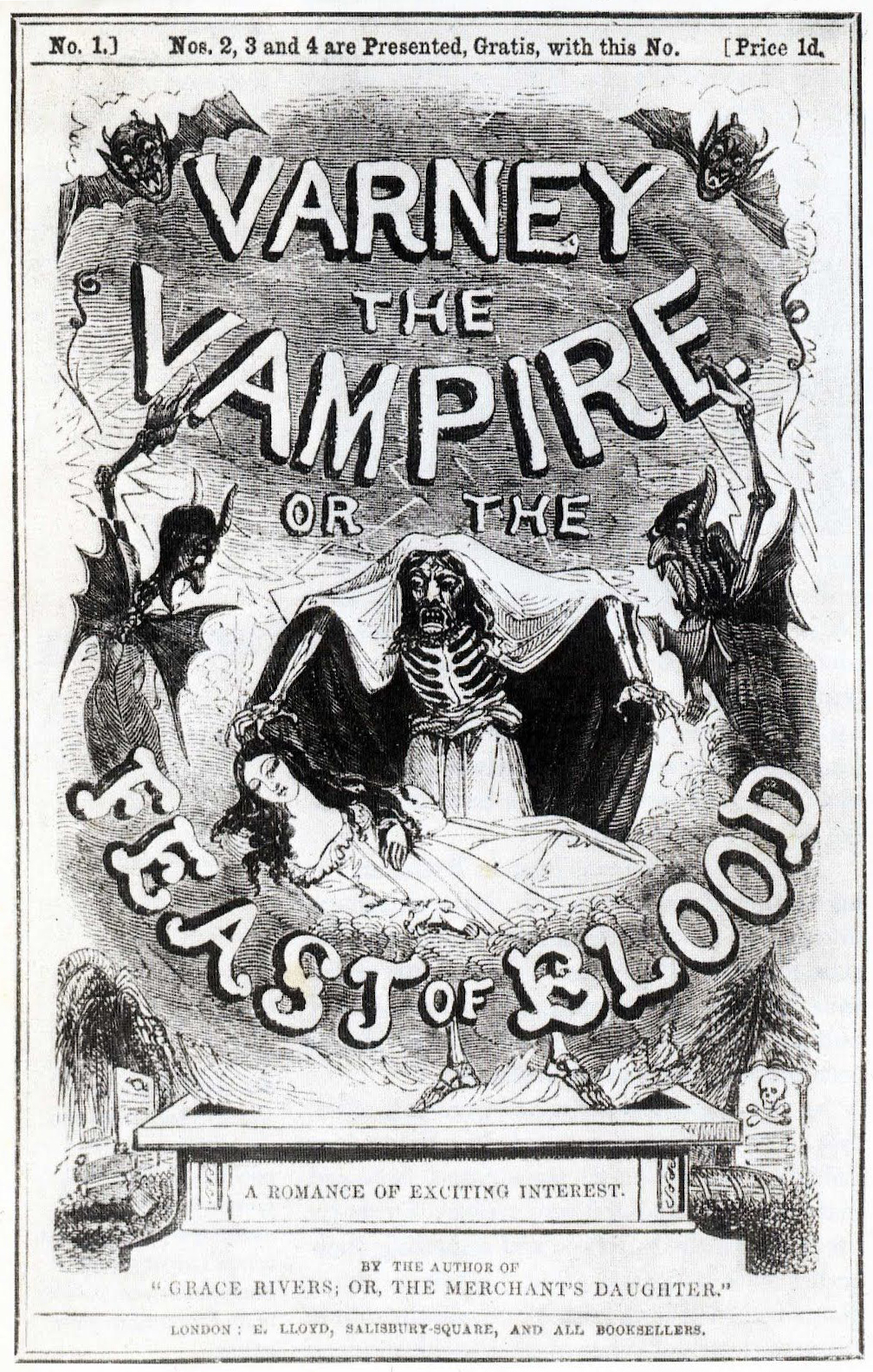Varney the Vampire is the main character in a series of penny dreadfulsCheap popular serial literature produced during the 19th century, typically a story published in weekly parts, each costing a penny. that ran from 1845–1847, Varney the Vampire; or, the Feast of Blood. The stories tell of the fictional vampire Sir Francis Varney, and introduce many of the tropes present in vampire fiction recognisable to modern audiences: his fangs leave two puncture wounds on the necks of his victims, he enters through a window to attack a sleeping maiden, he has hypnotic powers and superhuman strength.[1] But unlike later fictional vampires, Varney is able to go about in daylight and has no particular fear of crosses or garlic.[2]
The story, written either by James Malcolm Rymer or Thomas Preckett Prest, proceeds at “breakneck speed”, targeting an unsophisticated audience more interested in “galloping suspense than in coherence or subtle character development”, but it was nevertheless one of the most popular literary works of its time.[3]
Characterisation
Varney the Vampire contains so many inconsistencies, not least in the characterisation of Varney himself, that the academic Carol A. Senf has commented that it is “almost as difficult to classify as a literary work as it is to read”. At various points in the narrative Varney is described as a supernatural being who has lived since the time of King Henry IV (1367–1413); a turncoat following the conclusion of the English Civil War (1642–1651), punished for killing his son in a fit of rage by being transformed into a vampire; and a modern-day criminal who was brought back to life after his execution by hanging.[4]
Over the course of the series, Varney is portayed increasingly sympathetically as a victim of circumstances. He tries to save himself, but being unable to do so he commits suicide by throwing himself into Mount Vesuvius, after having left a written account of his origin with a sympathetic priest.[2]
Plot lines
The plot concerns the troubles that Sir Francis Varney inflicts upon the Bannerworths, a formerly wealthy family driven to ruin by their recently deceased father,[2] but the story overall focuses on ordinary human evil, not that of the vampire. Much of the evil in Varney centres on money, and the comparison between Varney’s bloodsucking and economic parasitism is made frequently. Varney is a victim of his uncontrollable thirsts, but he is victimised by those who simply exploit others for financial gain, such as the highwaymen who rob him and leave him for dead.[5]
Legacy
Varney the Vampire develops the theme of the vampire as an aristocrat, sexually attractive to its victims, a characterisation picked up by later writers.[6] Scholars such as A. Asbjørn Jøn have noted that Varney was a major influence on later vampire fiction, including Bram Stoker’s novel Dracula (1897).[7]

